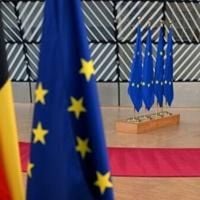After months of tense negotiations and a marathon overnight session in Brussels, the European Union has struck a deal to slash its carbon emissions by 90% by 2040 compared to 1990 levels—a move hailed by some as a climate milestone, but criticized by others as a retreat from earlier ambitions. The agreement, finalized on November 5 and announced by the Council of the European Union on November 6, 2025, comes just weeks before the global COP30 climate summit in Brazil, positioning the EU with a concrete, if contentious, climate roadmap.
The new targets, which update the EU’s 2035 emissions-reduction goals and set a clear intermediate benchmark for 2040, represent a significant step in the bloc’s ongoing push toward climate neutrality by 2050. According to Xinhua and AP, the Council of the European Union maintained the European Commission’s proposal for a 90% reduction in net greenhouse gas emissions by 2040, using 1990 as the baseline year. This intermediate target is seen as essential to keep the EU on track to meet its long-term climate goals under the European Green Deal, the sweeping policy package launched in 2019 that aims to transform the continent’s economy and society.
But getting to this agreement was no easy feat. As reported by AP, the deal was only sealed after a series of late-night debates and significant compromises among the 27 member states. Notably, Hungary, Slovakia, and Poland voted against the agreement, reflecting deep divisions within the bloc over how far and fast to push climate policy, especially as Europe faces economic headwinds and shifting political winds.
One of the most controversial elements of the deal is the increased flexibility for member states to meet their emissions targets. As Bloomberg and AP both highlight, countries will now be able to claim a greater share of their emissions reductions by purchasing international carbon credits. This means that instead of cutting emissions domestically, countries can invest in projects abroad—often in less-developed countries—that offset their own emissions on paper. The rationale, supporters argue, is to give member states the tools to meet ambitious targets without unduly harming their economies, especially during periods of economic stress.
“On this continent, we will continue with climate action, but it has to be bridged, it has to be married with independence and competitiveness. Not one without the other. All three are essential,” said Wopke Hoekstra, the European Commissioner for Climate, Net-Zero and Clean Growth, echoing the delicate balance the EU is trying to strike between environmental ambition and economic realities.
The agreement also includes a biennial assessment mechanism, as detailed by Xinhua, which will track progress toward intermediate targets and allow the EU to reassess its climate policy depending on economic performance. This built-in flexibility was a key demand for several countries wary of locking themselves into rigid targets amid global uncertainty. In addition, the deal permits the postponement of a new carbon trading plan covering transport and heating—a central demand of Poland, which has long argued that such measures would disproportionately impact its economy and citizens.
For some, these concessions represent pragmatic politics in a turbulent era. “This is exactly the signal that Europe has to send in these times,” argued Swedish climate minister Romina Pourmokhtari, who acknowledged the tough negotiations and thanked countries like Finland, Germany, Spain, and the Netherlands for pushing for higher emissions cuts. Spain’s climate minister Sara Aagesen added, “Now we have the possibility to go to Belem with leadership,” referring to the upcoming COP30 climate summit in Brazil.
Yet not everyone is convinced the EU’s climate leadership remains intact. Environmental groups have been quick to criticize the deal, arguing that the increased reliance on international carbon credits amounts to “offshore carbon laundering.” Thomas Gelin, a climate campaigner at Greenpeace EU, didn’t mince words: “The use of offshore carbon laundering to meet this nominal target means the EU’s own commitment is much lower, and that commitment means even less with a baked-in clause to dilute the target every two years.” Jeroen Gerlag, Europe director at the nonprofit Climate Group, echoed this concern, stating, “While the EU keeps its 90% commitment on paper, in effect it’ll be offshoring some of its emission reductions—making it someone else’s problem.”
The criticism underscores a broader tension running through European climate policy: how to balance ambition with pragmatism, especially as political and economic pressures mount. Since the Paris Agreement in 2015, many EU governments have shifted to the right, with some viewing climate regulations as shackling economic growth. Others warn that if Europe doesn’t lead in clean technology and renewables, it risks falling behind global competitors like China.
Meanwhile, the continent has faced a cascade of climate-driven disasters—wildfires, heat waves, and floods—that have made the stakes of inaction painfully clear. But other crises, such as Russia’s war in Ukraine and a newly volatile relationship with the United States, have increased pressure to curtail flagship environmental policies and prioritize economic resilience.
Despite these challenges, the EU’s updated climate law aims to keep the bloc’s Green Deal vision alive. The legislation, as outlined by Xinhua, covers a wide array of policy areas: energy, transport, industry, buildings, environment, agriculture, sustainable finance, circular economy, and health. The Council’s agreement clarifies flexibility areas and sets out the EU’s position for subsequent negotiations with the European Parliament, which must still vote on the deal and negotiate its final contents with the Council before it becomes legally binding.
On the same day as the agreement, the Council also approved an updated nationally determined contribution (NDC) for the EU and its member states, which will be submitted ahead of COP30 in Brazil. The European Commission had first proposed the 2040 target in July 2025, underscoring the urgency of locking in new commitments before the international summit.
European Commission President Ursula von der Leyen is now set to travel to Brazil for COP30, armed with what she and her allies hope will be seen as a demonstration of EU leadership—albeit a more flexible, politically palatable form than some climate advocates would prefer.
The road to climate neutrality by 2050 remains long and fraught with obstacles. As the EU heads into another round of global climate talks, its latest agreement is both a testament to the power of compromise and a reminder of the challenges in turning lofty ambitions into concrete action. Whether this new target will inspire others or invite further scrutiny remains to be seen, but for now, Europe has staked its position—and the world will be watching.


